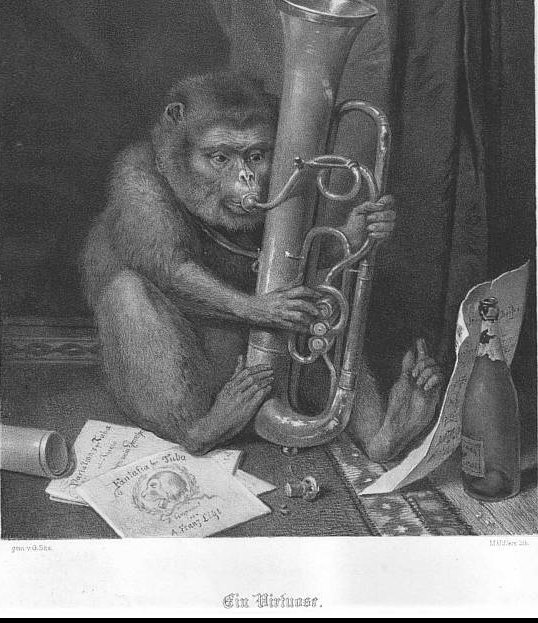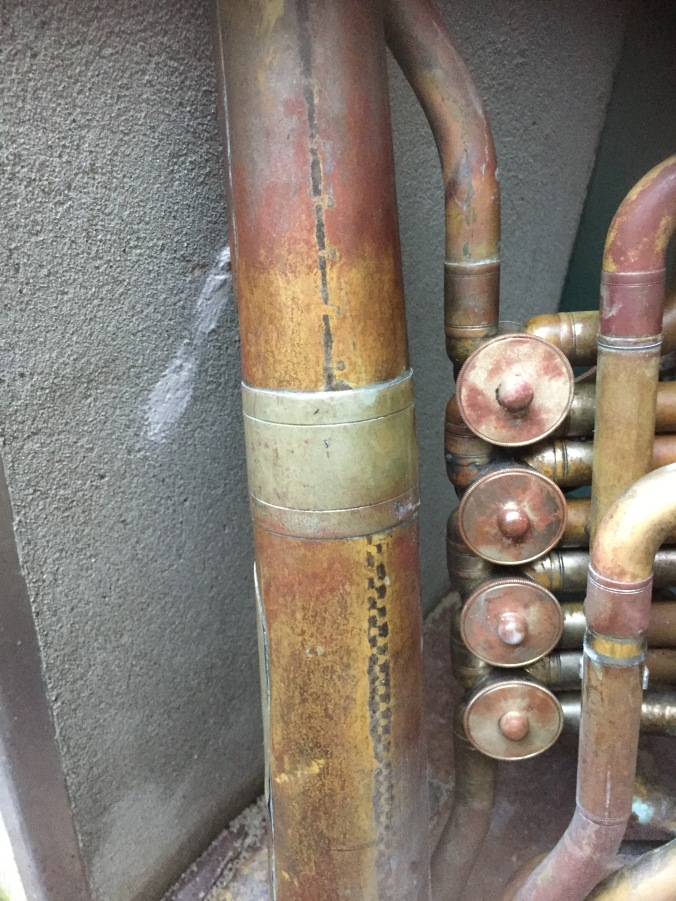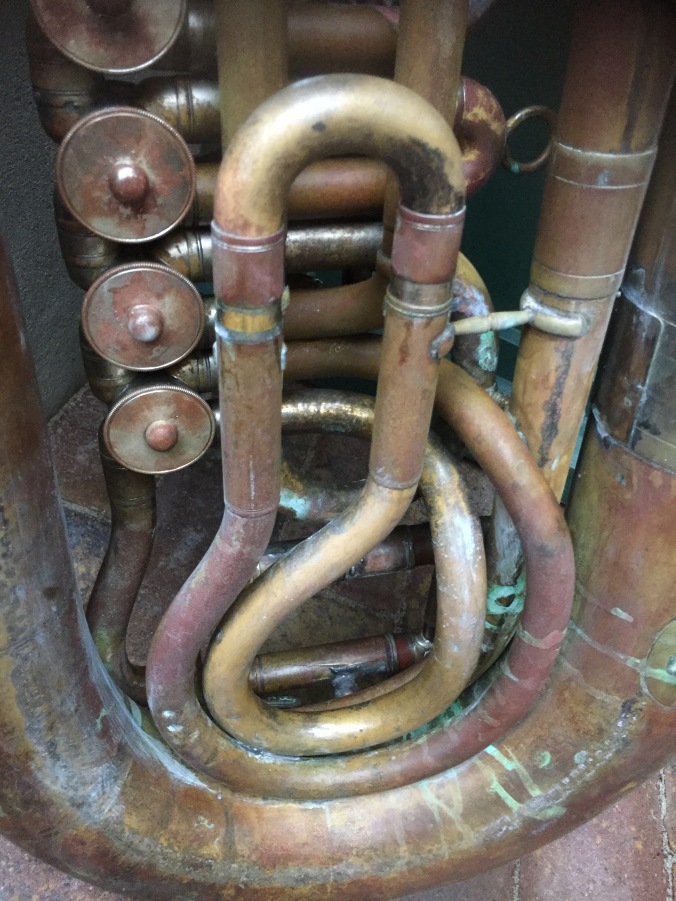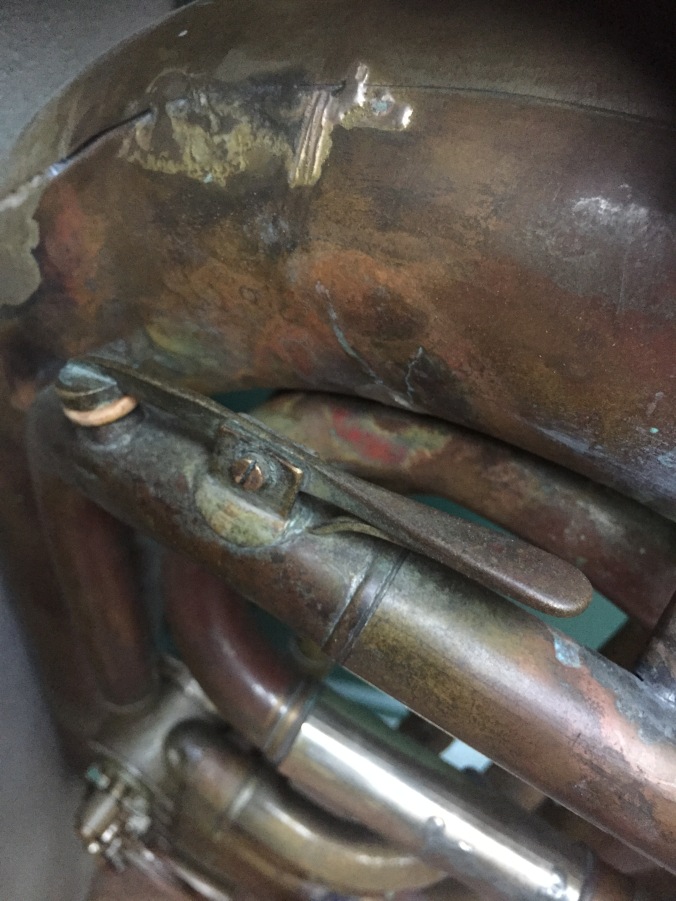
Condition not withstanding, a lovely lovely tuba
Along with the rubbish BBb – CC tuba debate, Eb (Es auf Deutsch) tubas contrary to popular belief (among tuba players;), were used in Germany since the very beginning. Although naturally quite rare, there were examples of Berliner tubas built in Eb.

a typically Eb tuba soloist
For the most part, Eb tubas in Germany were almost exclusively used in military orchestras/windbands, most of which were supplied with 3 valves. Often earlier pre 1900 Eb tubas were refered to as Bombardons rather than Tubas or Baßtubas implying a certain cultural/regional difference.

Hess Musikinstrumenten Fabrik of Klingenthal in Saxon
Along with the other various F-BBb-CC tubas, the Eb tuba developed at a brisk rate in the early 20th century, with the 1930s being somewhat of a high point in the evolution.
Our featured Hess tuba, made sometime beween 1935 and 1940 is just such an example. It’s horrid condition notwithstanding, the inherent potential of the design is obvious to anyone who has tried one of them.

interesting to notice the difference in seam patterns between the bottom and top bows
This particular instrument was brought in a few months ago with the hope that it be put back into playing condition. I had seen the tuba on Ebay floating around even earlier in the year, but had been put off by the seemingly bad condition. Someone had in between bought it and attempted to repair the multitude of cracks using silver solder, damaging the fragile surface even further. The current owner, like myself, thought it might be worth it to give it a go.

Hideous attempt at a repair, almost destroying the underlying metal. No cookie for you Sir!
While technically possible to restore, the cost is unfortunately prohibitive and for the moment, the tuba will remain a decoration. However, an inspection revealed the valves to be rather tight with good compression. Many meters of masking tape later, I had a relatively airtight Eb tuba. It actually sounds fantastic, very warm, even with the smaller diameter bell and with excellent intonation although a 5th valve would be very welcome.
Although the design is based off of the Alexander Eb Model 154, I found the Hess more to my liking. The sound leaps out of the bell while the Alexander took some coaxing.
For any instrument makers out there considing designing a new modern Eb rotary valved tuba, this is worth a look for you!

lovely curves
The Hess Eb has a number of lovely details, including the fantastic tubing bends and the one piece seamed bell.

that sir, is a bell seam…
Even the forged water key is pleasant to look at.

sigh…cracks everywhere:(
A note about the condition: After many years of service, tubas often become decorations, likely to be hung outside. In a northern climate such as Germany, the metal will experience differences in temperature from perhaps extremes such as -20 to 35+. In a sense, the metal is constantly expanding and contracting. After many years, the metal begins to loose its molecular bond and begins to disintigrate. Repairing this kind of damage is possible, but the tuba will never be as it once was, and it will be significantly more prone to further cracking. Unless the tuba is something unbelievably rare and valuable, its best to look for a better example.

stress cracks everywhere…
If you would like to learn more about Hess, please refer to my earlier blog post about the Hess Kaiser BBb tuba.

Specs:
ca 1935 – 1940 Hess Baßtuba in Eb.
Finish: brass body with nickel silver trimings. Originally nickelplated.
Valves: 18mm bore, 4 rotary valves.
Height: 104cm
Bell Diameter: 35cm

